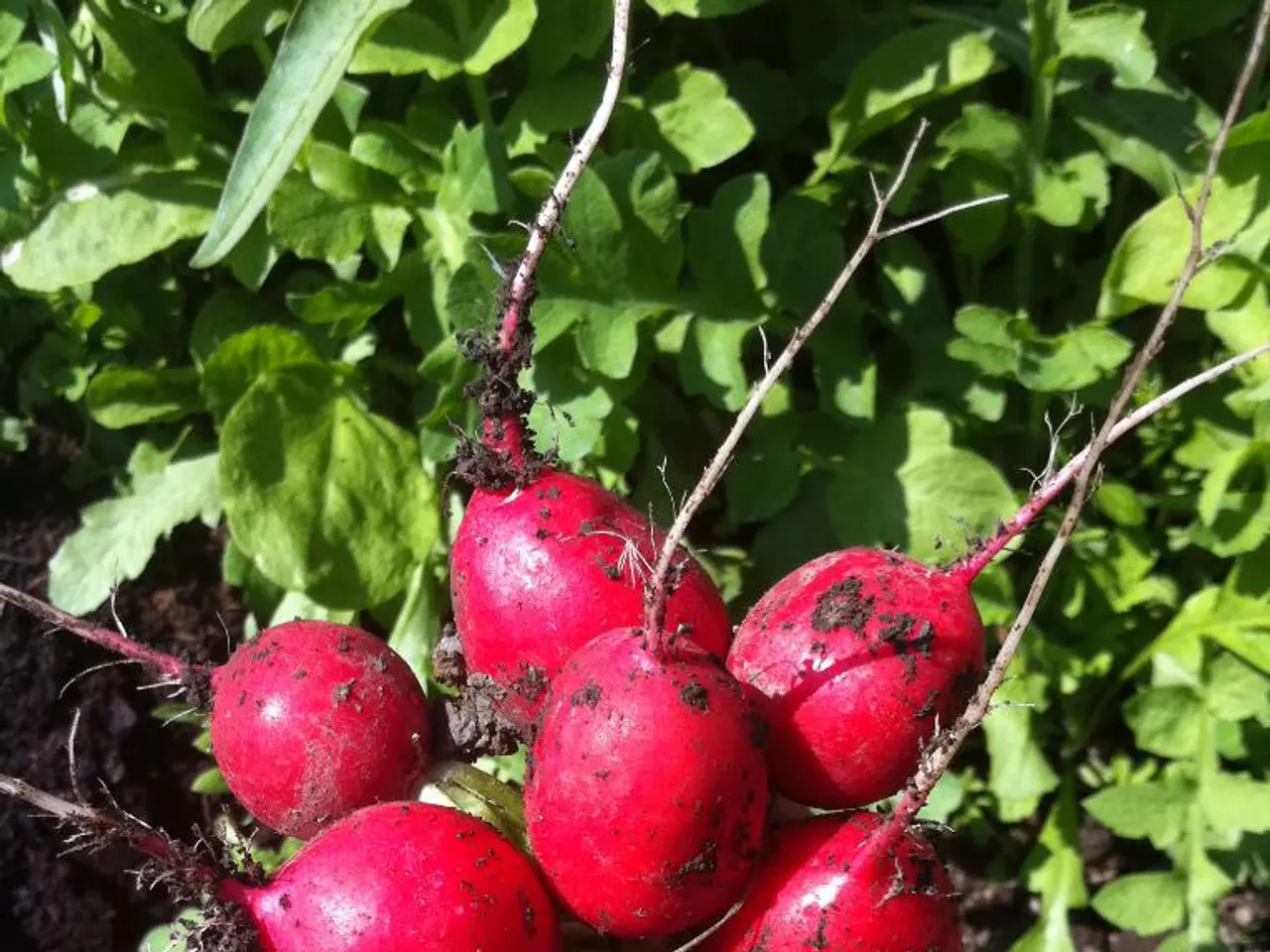Postponing Autumn Yard Maintenance Helps Preserve This Season's Pollinating Species
In the pursuit of a beautiful garden, many homeowners are finding ways to help pollinators thrive. Here's a practical guide on how to create a pollinator-friendly garden that not only looks stunning but also supports local bees, butterflies, and other pollinators.
Key Actions
- Plant native, pollinator-friendly species that bloom at different times to provide continuous nectar and pollen. Examples include butterfly bush, zinnias, and lavender. These vibrant flowers attract a variety of pollinators, such as bees, butterflies, hummingbirds, and moths.
- Create water sources such as shallow bowls with pebbles or birdbaths with textured sides to allow pollinators to safely drink, especially during dry spells.
- Provide shelter by leaving hollow stems, nooks in tree bark, brush piles, logs, and undisturbed leaf litter. These offer nesting and overwintering sites for native solitary bees, caterpillars, and butterflies. Building or purchasing bee hotels and bat houses further supports diverse pollinators.
- Delay garden cleanup in fall and winter rather than removing all plant debris immediately. Leaving stems, leaves, and brush undisturbed creates vital overwintering habitats for pollinators in different life stages.
- Minimise lawn mowing, or participate in initiatives like "No Mow May" to allow wildflowers to bloom and provide food and shelter.
- Use locally native plants adapted to your area and consult with local native plant societies to optimise pollinator benefits.
By integrating native blooms, water sources, shelter, and delayed cleanup, you will create a welcoming, year-round environment that supports the health and diversity of local pollinators in your garden.
Timing is Key
Pollinators, such as bumblebees, mason bees, and butterflies, emerge based on warming soil and air temperatures in early spring. Waiting until the temperature consistently stays above 50°F for at least a week can help protect local pollinators.
Starting other spring projects before garden cleanup can help prepare for planting season. Leaving a corner of your garden untouched allows ground-nester bees access to the soil they need for burrowing and creating safe homes for their young.
Planting tomatoes outside when overnight temperatures consistently stay above 50°F indicates that local pollinators are likely safe. During volatile spring changes, many pollinators rely on hollow stems, dried leaves, and piles of sticks for protection against sudden frosts and chilly nights.
The Importance of Pollinators
Almost half of the world's pollinator species, including bees and butterflies, are at risk of extinction. The USDA's 2022 Annual Pollinator Report indicates that there are 18 endangered and 9 critically endangered pollinator species globally. By creating pollinator-friendly gardens, homeowners can make a significant contribution to the conservation of these crucial creatures.
Embrace the Holistic Approach
Bonnie Ferrero, a passionate hiker, cook, gardener, and decorator, embodies a holistic approach to life, dedicated to service, growth, and well-being. By adopting this mindset and implementing the practices outlined above, you can create a beautiful, thriving garden that benefits both you and the pollinators.
Avoid using harsh pesticides or herbicides in your garden as they can be harmful to pollinators. Instead, consider natural pest control methods like companion planting and using beneficial insects. By taking these practical steps, you'll be on your way to creating a garden that not only looks great but also supports local pollinators and contributes to their conservation.
- To attract a diverse range of pollinators, consider planting native flowers such as butterfly bush, zinnias, and lavender in your garden.
- Providing water sources like shallow bowls or birdbaths with textured sides will encourage pollinators to drink during dry spells.
- Leaving hollow stems, brush piles, logs, and undisturbed leaf litter offers shelter for native bees, caterpillars, and butterflies.
- Delaying garden cleanup in the fall and winter allows for overwintering habitats for pollinators.
- Minimizing lawn mowing or participating in initiatives like "No Mow May" can help wildflowers bloom and provide food and shelter for pollinators.
- Consult with local native plant societies to find the best plants for your area to maximize pollinator benefits.
- In the spirit of environmental-science, opt for natural pest control methods over harsh pesticides and herbicides to support pollinators in your home-and-garden lifestyle. By adopting these practices, you can contribute to the fight against climate-change and support fashion-and-beauty with a sustainable approach to gardening.




